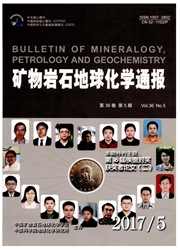

 中文摘要:
中文摘要:
汞是一种全球性污染物,旨在全球范围内控制和削减人为汞排放和汞产品使用的国际汞公约将于2013年10月在日本的水俣市签订实施。本文从当前国际学术界针对大气汞来源和迁移转化规律、水生生态系统汞的生物地球化学循环演化、污染场地汞的生物地球化学、汞与硒相互作用、微生物与汞相互作用、人体汞暴露的危害和汞同位素环境地球化学等方面获得的最新进展进行了系统论述,指出了当前开展汞在环境中的生物地球化学研究中存在着的缺乏全球尺度对大气的迁移转化规律的认识、气候变暖条件下大气汞沉降对汞甲基化影响与生物甲基汞累积机制、微生物与汞在环境中的相互作用关系以及长期低剂量汞暴露健康风险评价等薄弱环节,并对新兴的非传统汞同位素技术研究领域进行了展望。
 英文摘要:
英文摘要:
Mercury is a global pollutant and the Minamata Convention on Mercury aiming to globally controlling and reducing of Hg in the environment is going to be signed and implemented in October 2013 in Minamata City, Japan. In the paper, the research progresses on atmospheric Hg sources and its transportation, environmental geochemis- try cycling of Hg in aquatic ecosystems, biogeochemistry of Hg at contaminated sites, interactions between seleni- um and Hg, interactions between microbes and Hg, risks of human Hg exposure, and environmental geochemistry of Hg isotopes were thoroughly overviewed. The lacks of knowledge pertaining to global scale transportation of at- mospheric Hg, impacts of climate warming on methylation of deoposited atmospheric Hg as well as mechanisms of generated methylmercury bioaccumulation, environmental interactions between microbes and Hg, and risks assess-ment of long term and low dose Hg exposure were indicated. Finally, the prospects of Hg isotope techniques in the environment were made.
 同期刊论文项目
同期刊论文项目
 同项目期刊论文
同项目期刊论文
 Emission characteristics and air-surface exchange of gaseous mercury at the largest active land?ll i
Emission characteristics and air-surface exchange of gaseous mercury at the largest active land?ll i A whole-air relaxed eddy accumulation measurement system for sampling vertical vapour exchange of el
A whole-air relaxed eddy accumulation measurement system for sampling vertical vapour exchange of el Sensitivity analysis of an updated bidirectional air–surface exchange model for elemental mercury va
Sensitivity analysis of an updated bidirectional air–surface exchange model for elemental mercury va 期刊信息
期刊信息
